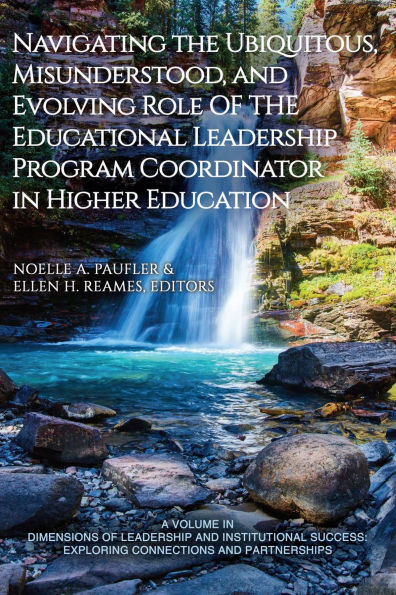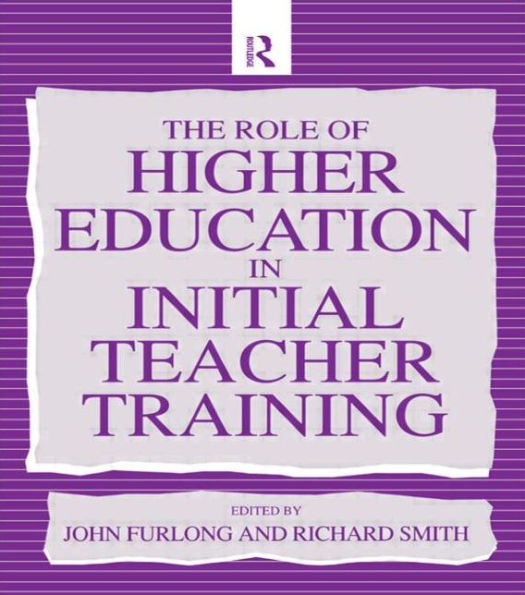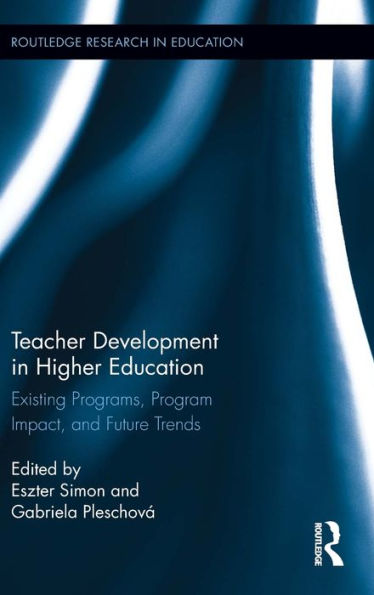Home
Navigating the Ubiquitous, Misunderstood, and Evolving Role of Educational Leadership Program Coordinator Higher Education
Barnes and Noble
Loading Inventory...
Navigating the Ubiquitous, Misunderstood, and Evolving Role of Educational Leadership Program Coordinator Higher Education
Current price: $100.00

Barnes and Noble
Navigating the Ubiquitous, Misunderstood, and Evolving Role of Educational Leadership Program Coordinator Higher Education
Current price: $100.00
Loading Inventory...
Size: Hardcover
*Product information may vary - to confirm product availability, pricing, shipping and return information please contact Barnes and Noble
Navigating the Ubiquitous, Misunderstood, and Evolving Role of the Educational Leadership Program Coordinator in Higher Education is an edited volume of chapters focused on the role of the program coordinator (PC) in educational leadership. The book is a recent addition to the book series: Dimensions of Leadership and Institutional Success: Exploring Connections and Partnerships, edited by Ellen H. Reames. Noelle A. Paufler and Ellen H. Reames (editors) created this book to examine various aspects of the PC role because it has been largely ignored in the educational leadership preparation literature. The book examines various aspects of the PC role to include responsibilities, navigating the politics and policies of higher education and educational agencies, internal and external problems and barriers related to the role, and recommendations and possibilities for enhancing the PC role. The book is divided into 3 sections: Section 1 centers on the roles of the PC and also includes a model that can be used to structure PC responsibilities within programs. Section 2 focuses the readers’ attention to present misunderstanding of the PC as a quasiadministrative role which appears to be gaining in clarity through present research. Section 3 gives a glimpse to future trends which includes the growing use of clinical faculty as PCs.
The primary audience is higher education faculty and administrators. The term program coordinator spans across all disciplines and is used in most higher education institutions across the United States. Higher education institutions are also interested in sustaining partnerships within the university and the communities beyond. This book can assist with nuances of partnership development for any higher education field of study.
The audience also includes faculty in higher educational leadership program development and school/university partnership development and enhancement across public and private enterprises who are educating future leaders. Other interested groups are university and school-based professionals who are seeking to improve relationships, partnerships, and collaborations between educational leadership preparation programs and K-12 districts and related agencies. The book would also be of value to those who conduct research in the areas of partnership creation and implementation and to those who conduct research which improves educational leadership preparation and development. The role of the PC in educational leadership is critical to the success of higher education leadership preparation programs and is often very different than PCs in other higher education disciplines.
The primary audience is higher education faculty and administrators. The term program coordinator spans across all disciplines and is used in most higher education institutions across the United States. Higher education institutions are also interested in sustaining partnerships within the university and the communities beyond. This book can assist with nuances of partnership development for any higher education field of study.
The audience also includes faculty in higher educational leadership program development and school/university partnership development and enhancement across public and private enterprises who are educating future leaders. Other interested groups are university and school-based professionals who are seeking to improve relationships, partnerships, and collaborations between educational leadership preparation programs and K-12 districts and related agencies. The book would also be of value to those who conduct research in the areas of partnership creation and implementation and to those who conduct research which improves educational leadership preparation and development. The role of the PC in educational leadership is critical to the success of higher education leadership preparation programs and is often very different than PCs in other higher education disciplines.
Navigating the Ubiquitous, Misunderstood, and Evolving Role of the Educational Leadership Program Coordinator in Higher Education is an edited volume of chapters focused on the role of the program coordinator (PC) in educational leadership. The book is a recent addition to the book series: Dimensions of Leadership and Institutional Success: Exploring Connections and Partnerships, edited by Ellen H. Reames. Noelle A. Paufler and Ellen H. Reames (editors) created this book to examine various aspects of the PC role because it has been largely ignored in the educational leadership preparation literature. The book examines various aspects of the PC role to include responsibilities, navigating the politics and policies of higher education and educational agencies, internal and external problems and barriers related to the role, and recommendations and possibilities for enhancing the PC role. The book is divided into 3 sections: Section 1 centers on the roles of the PC and also includes a model that can be used to structure PC responsibilities within programs. Section 2 focuses the readers’ attention to present misunderstanding of the PC as a quasiadministrative role which appears to be gaining in clarity through present research. Section 3 gives a glimpse to future trends which includes the growing use of clinical faculty as PCs.
The primary audience is higher education faculty and administrators. The term program coordinator spans across all disciplines and is used in most higher education institutions across the United States. Higher education institutions are also interested in sustaining partnerships within the university and the communities beyond. This book can assist with nuances of partnership development for any higher education field of study.
The audience also includes faculty in higher educational leadership program development and school/university partnership development and enhancement across public and private enterprises who are educating future leaders. Other interested groups are university and school-based professionals who are seeking to improve relationships, partnerships, and collaborations between educational leadership preparation programs and K-12 districts and related agencies. The book would also be of value to those who conduct research in the areas of partnership creation and implementation and to those who conduct research which improves educational leadership preparation and development. The role of the PC in educational leadership is critical to the success of higher education leadership preparation programs and is often very different than PCs in other higher education disciplines.
The primary audience is higher education faculty and administrators. The term program coordinator spans across all disciplines and is used in most higher education institutions across the United States. Higher education institutions are also interested in sustaining partnerships within the university and the communities beyond. This book can assist with nuances of partnership development for any higher education field of study.
The audience also includes faculty in higher educational leadership program development and school/university partnership development and enhancement across public and private enterprises who are educating future leaders. Other interested groups are university and school-based professionals who are seeking to improve relationships, partnerships, and collaborations between educational leadership preparation programs and K-12 districts and related agencies. The book would also be of value to those who conduct research in the areas of partnership creation and implementation and to those who conduct research which improves educational leadership preparation and development. The role of the PC in educational leadership is critical to the success of higher education leadership preparation programs and is often very different than PCs in other higher education disciplines.

















